Pictured above: Sharai Bohannon/Photo: Joseph Drobezko
Sharai Bohannon, former Scapi theater correspondent, is a powerhouse in person and in words. A playwright and theater enthusiast, her work tackles the reality that disenfranchised folks face daily in the US. Her plays have been produced in Arkansas, Illinois, Iowa, Missouri, Texas, and North Carolina.
Our conversations around commutes, coffee, and theater bring a certain amount of joy to frustration. Perhaps this comes from getting to know her on a personal level, but within her scripts, a little snark and sass is inserted into stage directions and descriptions. For instance, in In The End, “EMMY’s clothes make no sense. Nothing on her person is of this decade and none of the pieces make sense together.”
Bohannon has been interested in surrealist playwriting since her first script analysis class for Sarah Ruhl’s The Clean House.
“The imagery and symbolism that would fall from that balcony and leave a mess in that living room is something I’ve always been inspired by,” Bohannon said. “Reading more of her work cemented the deal for me. Melancholy Play is goals.”
Paula Vogel has been a major influence of Bohannon’s work, including How I Learned to Drive, Baltimore Waltz, and Indecent.
“Paula’s work is a master class,” Bohannon said. “I like to attempt to blend the beauty and sadness of the human condition in a way that conveys I’m driving her bandwagon.”
Bohannon’s In The End strikes a balance of blending the surreal with reality. It is a story of two women, Emmy and Bridgette, who continually cross paths during the worst of times. Both are on separate missions in a city where violence runs rampant. In the End aims to make sense out of senseless death and provide some small comfort to those who grieve the fallen.
As the new concentration/detention/internment camps grew in size and prominence, Bohannon felt compelled to contribute her voice, her writing to raise awareness and recognition. Diana Burbano and Ricardo Soltero-Brown curated Protest Plays Project’s #TheatreActionImmigration, a selection of short plays and monologues dealing with immigration. Bohannon got a prompt from Soltero-Brown: an ICE Officer.
“This is not a character I would typically give time to in my work so that challenged me in a way that I haven’t been challenged in maybe forever,” Bohannon said. “But all of my work is very feminist driven.”
Bohannon prompted conversations with friends who could relay stories of those who voted on “the wrong side of history in 2016,” and eventually, she found Sonya. What resulted was What About The Children?, a short play about a wife of an ICE officer that has had enough.
I asked Bohannon about both of these plays, her process, and her thoughts towards creating theater in a highly flammable political climate.
・・・
The following questions refer to Bohannon’s play In The End:
Writing style, of course, develops over time for any playwright, but was there a specific moment/play that you wrote in which you felt comfortable including your voice within stage directions/descriptions?
Bohannon: This is the first play where I started inserting myself. A lot of what’s learned in academia is to get rid of your voice. It has taken me a while to shake that off. I read a lot of scripts on the New Play Exchange and I noticed that a lot of my favorite plays contain enough of the author’s voice with such clarity that I can practically hear them reading it to me. I lucked into finding some playwrights I admire, like R. Eric Thomas and Rachel Lynett, that made me wish I felt comfortable doing that.
Because of the way this piece was written, it became the first one I wrote that sounds like me through and through. Like you said, writing style develops over time, and I’m at an age where I want to write in my own voice as opposed to getting the grade I want and/or signaling to certain people that I can color inside the lines.
What is your process for understanding, developing, and identifying your characters? How do you get to know them as they become a part of your story? In particular, for non-human/otherworldly characters like Emmy, how do you go about building them?
Bohannon: I like to write when I have a character in mind. I would love to be one of those people that outlined and planned things, but if left to my own devices, I wait until a character (or sometimes a moment between two characters) excites me and then just start throwing it on paper to see where it goes. A lot of the time I can follow one character through and then tweak the other ones as need be. I model a lot of characters after people I know, especially friends, because not only do you find a characters voice quickly, but you also know how they would respond to most situations. You can just transfer that to the page. It takes away from the guesswork and allows me to put together people I love who’ve never met never met each other in real life.
Emmy is a bit different because I sat down thinking the script would be about Faith and her imaginary friend. Emmy even starts off (in the early drafts) as fun creature that signals to people that I’ve watched a lot of Doctor Who, but I received some bad news while writing that scene and it shifted the play. I zeroed in on Emmy, but I also legitimately needed to deal with death, violence, and the lack of effort put into missing/murdered people of color at that time. I wrote a 45 page draft and shut it away for a few months aside from one local opportunity that gave me a very nice response that made me think there was hope for this script.
The play’s subject surrounding how deaths of Black womxn are ignored, specifically being set in middle America, is unfortunately unique, which lends an even larger significance and irony to the subject matter. For this play and others, how do you determine the meaning of your plays?
Bohannon: For this one I just unloaded some things I needed to get off of my chest. It’s very much a play about loss at its core. Everyone in it has lost something/someone or is about to lose something/someone.
I also have a friend, B.B. Cooper, who focuses a lot of their art on raising awareness of all of the missing black women in Chicago, which definitely struck a chord with me last summer. I would open social media and see more hate crimes perpetrated against black womxn on a national level. I don’t typically write from an emotional place, so each revision was a lesson in its own way. Like everything else I’ve written, I just let it unfold and hoped it would end up somewhere worth the journey.
Sometimes this method bites me in the ass. I have too many themes. Like my thesis play, Craigslisted, started out that way and a couple of playwright friends took me out to coffee to gently point out that I was fighting a lot of battles in 80 pages. Sometimes it’s just fun with no purpose.
What stories are you interested in telling? What stories are you not interested in telling?
Bohannon: I write feminist dark comedies mostly but have been dipping my toes in sci-fi again recently. I want more stories with folx onstage, especially folx of color, and I try to do that every chance I get. Even in school, I’d find ways to squeeze in some feminist energy no matter the requirements, casting, or professor. I’m specifically here for stories where womxn have agency and are never reduced to talking about a man. These are the stories that mostly get hidden, ignored, or never written, because most places won’t produce them. I’d rather write those stories and seek out places that want them than to write something primed for people who worship the canon.
I’m definitely over the canon and will never have interest in most of those plays again. I tell people that I had to read/sparknotes/discuss/write about/design Death of a Salesman almost every semester for at least, at least, one class and now I get a bit queasy whenever anyone wants to talk about it. I go out of my way to avoid a lot of the plays in the popular canon because there’s a ton of professors out there that treat it like the end all be all. All of my academic mentors are people who were talking to us about Sarah Ruhl, Lynn Nottage, Paula Vogel, Maria Irene Fornes, Brandon Jacob Jenkins, Lorraine Hansberry’s works outside of A Raisin in the Sun, and other writers who deserve so much more stage time that is usually taken up by regurgitating the canon.
What styles of playwriting interest you most? The blending of reality and surrealism within In the End is really intriguing, and I’m curious if this is a balance you try to strike in your other writing, as well.
Bohannon: Unfortunately, I’m more of a realist (when people talk about the plays that could be sitcoms I feel very attacked) but I keep trying. There’s definite hints of wanting to play with genre and structure in my other full-length, a few shorter pieces, and attempted full-lengths but nothing of this magnitude before this. I guess it goes back to me just going where the characters take me and being really fortunate that Emmy lead me almost to where I’d like to be.
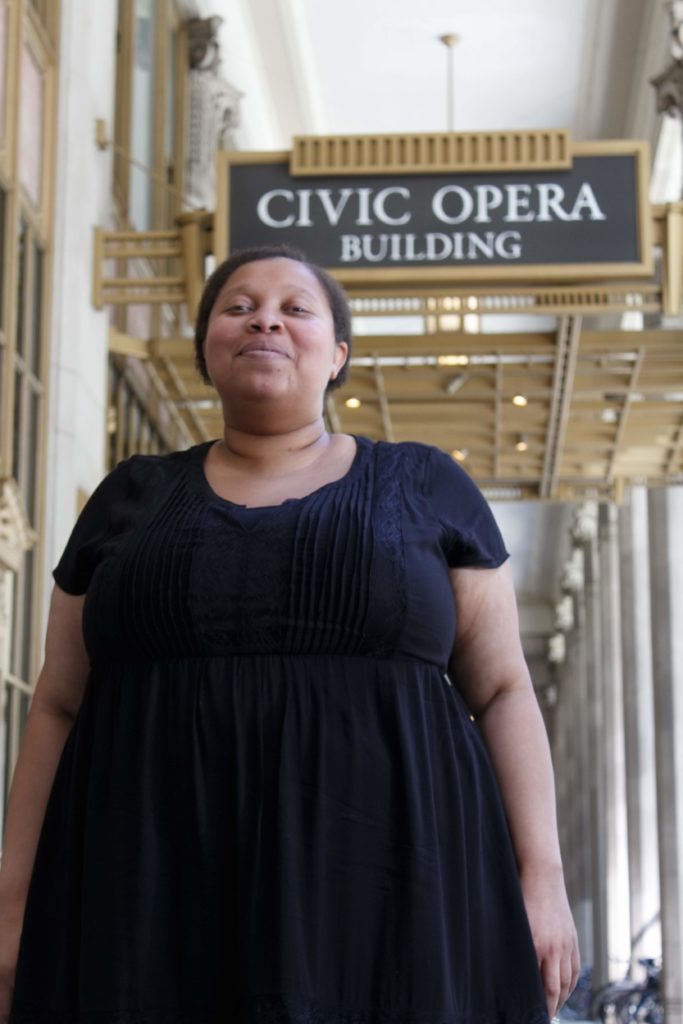
The following questions refer to Bohannon’s play What About The Children?:
What did these characters used to have in common? Do you think it was Sonya’s complacency towards Matt’s beliefs that kept them together for so long?
Bohannon: I believe Sonya was raised in a similar environment as the one she’s currently living in. In my mind, she’s one of those women who never got to find herself and discover her independence. She went from one problematic environment immediately to a man who shared her family’s views. Because this is all she’s ever known, she’s never had to evaluate her privilege. Now that she’s doing the work ,she’s sees that they’re on the wrong side. She’s having that moment, granted very late in the game, that most of us have when we’re younger where a light goes off, you hear what the people who are closest to you are saying, and you just can’t excuse it anymore.
How did you build the character of Matt?
Bohannon: Matt is based off of all of my friend’s uncles who took to Facebook after the 2016 election because they felt emboldened to tell people of color they were overreacting and all of their dads who dismiss blatant racism everyday (that kid was shot because he looks like a thug, but blue lives matter more, better to shut out all immigrant families because of possible terrorists, and other nonsensical arguments). A lot of Matt’s tone and justifications are taken from a lot of those conversations. I’d been waiting for a way to funnel all of those arguments into something and when Soltero-Brown gave me this prompt, it all just poured out.
Why is it significant that both these characters are white? What does that lend to the piece’s overarching theme?
Bohannon: There is this conversation surrounding the complicity of white women when it comes to systematic racism. Somewhere between I think 47% and 52% (different articles give different stats) of white women voted for the train wreck that currently sits in the oval office. I’ve also noticed that a lot of women in Sonya’s age bracket have a hard time wrapping their heads around a more inclusive idea of feminism (see every time a Facebook page changes the spelling from Women to Womxn, the pushback so many of my non-binary friends get when they ask to respect their pronouns, and like 40+ examples that aggravate me to no end). I thought instead of writing about two white people who don’t care about people of color it would be more interesting to have Sonya take inventory and decide to legitimately do better. She may be joining us late, but she’s joining us. That’s a narrative we need as opposed to the doubling down on ignorance.
Why was it important for these characters to already have had children? How does that change this final confrontation for each character?
Bohannon: Sonya’s last straw is seeing the father of her kids on TV putting little kids in cages and being proud of himself for doing it. I think a lot of people are able to distance themselves from the horrendous stuff that goes on in the news because it doesn’t affect them. I get the impression that Sonya is one of the women who would try to make her marriage work to keep her family whole. She might even think she can help get Matt on a journey to enlightenment and she would follow that train of hope forever, if not for this particular moment where something clicks and she knows she doesn’t want this person on her TV coming home to her every day. If she allows this, then she’s signaling to her kids that it’s okay to be like their dad.
I have this belief that women are screaming internally in the plays, books, movies, comics, everything as the male characters live these full lives and have epic adventures. I sometimes feel like it’s worse than fridging her completely. because she’s there but not really fully realized, so she’s a prop in the male protagonist’s world. I always want to know what the women are thinking and doing and/or why they’re supporting these men instead of figuring out what makes them feel fulfilled in their own life. It’s frustrating to watch it unfold and frankly, it bores me to death.
In a perfect world, I would’ve finished the full-length I wanted this to be and we would see her daughter start to question their family, which leads Sonya to question what she’s known as well. It leads her on this journey that ends with her feeling the weight of it all and starting to make steps to do what’s right. We’d be able to see these two generations of women get it right in what is a family that has continued to be on the wrong side of history as far back as we can imagine.
・・・
Coming up locally in Chicago, the first scene from In The End be seen at The Women’s Theatre Alliance of Chicago showcase on July 10. What About The Children? will be part of the Ain’t I A Woman? Playfest, a showcase the work of Women of color playwrights, in Louisville, Kentucky on July 25.



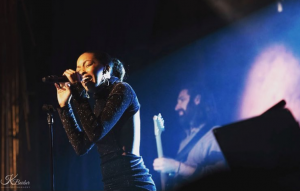
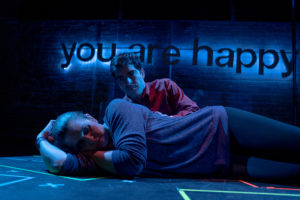
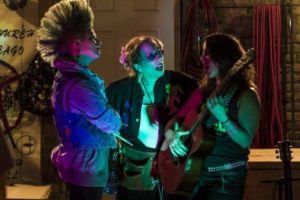


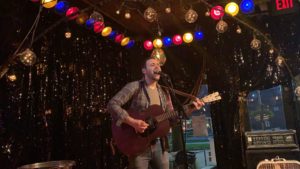


Be First to Comment